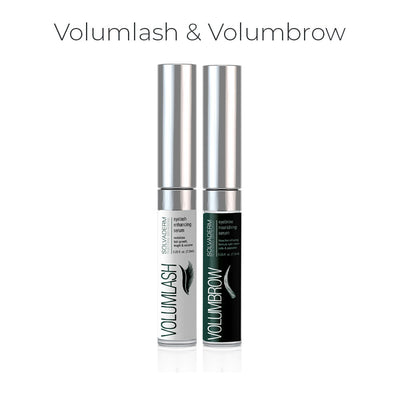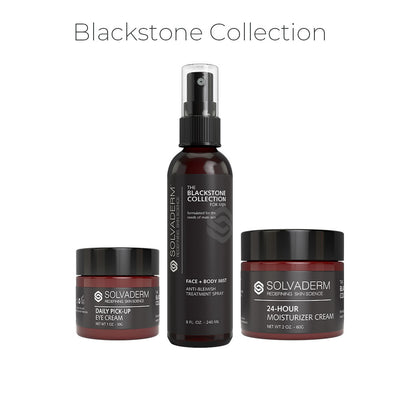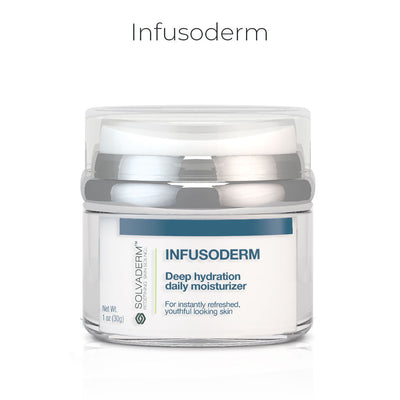Facial redness can be caused by different factors and if you’ve ever wondered how to calm redness on the face, the first course of action is determining the cause before seeking treatment.
Flare-ups of facial redness are fairly common, and most people will experience it at one point in their life. Whether it’s related to allergies, a skin condition, or simple flushing from working out or excitement, chances are you’ve experienced facial redness if you’re reading this.
Since redness is symptomatic of many different things, treatments can seem never-ending, but it’s not impossible to drastically reduce it and improve your appearance. Here’s everything you need to know about how to reduce facial redness and what causes it.
What Causes Redness On Your Face
Chances are, if you’re experiencing facial redness, you’re also experiencing other symptoms that can help you pinpoint the cause. Here are the five common causes of facial redness.Cause #1 – Inflammation
Skin inflammation can be caused by a damaged skin barrier, an autoimmune disorder, sun damage, or allergies. Redness is usually the visual hallmark sign of inflammation within the skin, but it’s almost always accompanied by other symptoms such as:- Itchy, burning, or stinging sensation
- Scaly texture or raised bumps
- Skin that is warm to the touch
- Pimples or blisters
- Raw and/or cracked skin that may bleed
- Severe dryness of the affected area
Cause #2 – Medication
It’s no secret that medications have side effects, including facial redness.Some common medications that may cause facial redness include:
- Antibiotics
- Anticonvulsants
- Antigout medications
- OTC anti-inflammatory drugs, such as ibuprofen or aspirin (NSAIDs)
- Chemotherapy drugs
Cause #3 – Rosacea
Rosacea is a skin condition that causes the flushing of the skin accompanied by small, red, pus-filled bumps that resemble acne. There is no cure for rosacea, but there are plenty of treatments that can keep the condition under control.
Rosacea can last anywhere from days to weeks to months. While the exact cause of rosacea is unknown, you are more likely to develop the condition if you are a woman, a person with skin sensitive to sunlight, over the age of 30, or a smoker.
If you think your facial redness is related to rosacea, consult your doctor or dermatologist who can advise you on the best course of action.
Cause #4 – Dry Skin
When the skin is very dry, it can become irritated and inflamed due to a lack of moisture. This in turn can compromise the skin’s moisture barrier and result in facial redness.
If dry skin is the cause of your facial redness you’ll likely also experience other symptoms - the skin may feel flaky and rough, or scaly in texture and appearance. Dry skin can also feel tight and itchy.
Generally, dry skin is fairly easy to treat but will require a diligent routine that includes frequent hydration and moisturization. If you’re looking for dry facial redness relief, start using a high-quality serum such as Excelagene that contains two weights of hyaluronic acid in its formula for twice the hydrating power and a daily moisturizer like Infusoderm for long-lasting softness and antioxidant protection.
Cause #5 – Weather
Sun exposure is one of the leading causes of aging and skin damage. In the summer, sunscreen flies off the shelves as people spend more time outside; however, sun damage can occur 365 days a year in all weather - rain, sun, or snow. Sunburns can range in severity as the UV index fluctuates seasonally and what you might think is facial flushing from cold weather might be a sunburn.
Protect your skin by applying sunscreen every single day. Aim to use a product containing an SPF of at least 30, which is what Dermaxsol offers in its dermatologist-developed formula, to ensure your skin is properly protected year-round and help stop face redness due to the sun.
How to Calm Redness On Your Face
Now that we’ve established some of the leading causes of facial redness, let’s discuss how to get rid of redness on the cheeks, or any other area that it develops. Since redness usually stems from inflammation, taking a well-rounded approach can help reduce internal and external inflammation.
Here are some tips and tricks on how to reduce redness on the face quickly.
Cool Water, Bath, or Cold Compress
Cool water and ice aid inflammation caused by internal and external factors so if you’re experiencing facial redness related to sunburns, inflammation, or rosacea, these should be your first courses of action.
Begin by cleansing your face with a gentle cleanser to remove any makeup, bacteria, and excess oil, then apply a cool, clean cloth to the affected areas for several minutes. When the compress starts to get warm from the natural heat of your skin, remove it and let it cool down again.
Ice-water face baths are another wonderful way to reduce facial redness. When your skin is exposed to cold water, your capillaries constrict, which results in quick facial redness relief. Simply fill a clean bowl with ice cubes and water and dunk your face in for at least 30 seconds. Wait one minute before dunking your face again. Repeat the process four to five times for the best results.
Lifestyle Changes
Since the skin is our largest organ, it’s pretty good at telling us when something is wrong! If you’re experiencing persistent facial redness, it might be time to implement some lifestyle changes as your redness could be caused by habits that run more than skin deep.
In addition to visiting your doctor, using proper treatments, and taking appropriate medications, here are some other tips on how to remove skin redness and prevent it from reoccurring:
- Stop smoking
- Reduce alcohol consumption
- Cut back on processed and inflammatory foods
- Minimize sun exposure
Salicylic Acid or Glycolic Acid Peels
A good quality salicylic acid or glycolic acid peel can help create a clearer, more even-toned complexion. Salicylic Acid, a beta hydroxy acid (BHA), works by exfoliating within the pore lining to dissolve dirt, bacteria, and excess oil, whereas Glycolic Acid an alpha hydroxy acid, works by dissolving dead skin cells on the surface. Additionally, a regular peel can promote accelerated cellular turnover and fade discoloration, further reducing the appearance of facial redness.Follow a Proper Skincare Routine
A proper skincare routine is integral when combating facial redness since it takes a balanced approach to both treatment and prevention. Using the right products in your routine can help you calm facial redness while addressing any other concerns you may have such as aging skin.
Aim to incorporate the following steps into your routine for the best results:
How to Prevent Facial Redness
Identifying and treating your facial redness is only half the battle. Prevention is necessary to avoid redness flare-ups. Here are our tips for preventing redness from occurring in the future:Tip #1 – Protect Your Skin With Sunscreen
As previously mentioned, sun damage and sunburns are some of the leading causes of facial redness so protecting your skin with sunscreen significantly lessens the risk of this occurring. Additionally, it also helps protect you against skin cancer and photoaging.Tip #2 – Limit Exposure to Irritants
Unfortunately, there are a multitude of irritants that can exacerbate facial redness and it can be hard to know what’s triggered a reaction if it happens. However, if you have sensitive skin or are prone to allergic reactions, it’s best to limit your exposure to common irritants if you’re looking to reduce redness.Some of the most common culprits for causing reactions and facial redness include:
- Harsh soaps and cleansers
- Simple or denatured alcohol
- Artificial fragrances
- Chemical dyes
- Overly abrasive scrubs
- Fabric detergents
FAQ: How to Calm Redness on the Face
Question #1 – How to cure redness on the face overnight?
A red complexion, whether it’s accompanied by any other symptoms such as itching and soreness, can be indicative of something that runs more than skin deep and requires a balanced approach to treatment and prevention. While you may not be able to eliminate it overnight, start with a simple, gentle routine that focuses on soothing the skin, reduce your exposure to common irritants and allergens as much as possible, and apply a cool compress for fast facial redness relief.Key Takeaways
All in all, calming facial redness requires a well-rounded approach, just like any other skin issue. Of course, it’s always wise to see a dermatologist if the issue is ongoing and causing you concern, so they can check for any underlying causes.
Most individuals will find, however, that if they follow the skincare tips above, make some positive lifestyle changes, and incorporate professional-grade treatments such as those in our extensive collection into their daily routine, they’ll start seeing improvements in a short time and achieve a healthy complexion that appears clear and evenly toned!








